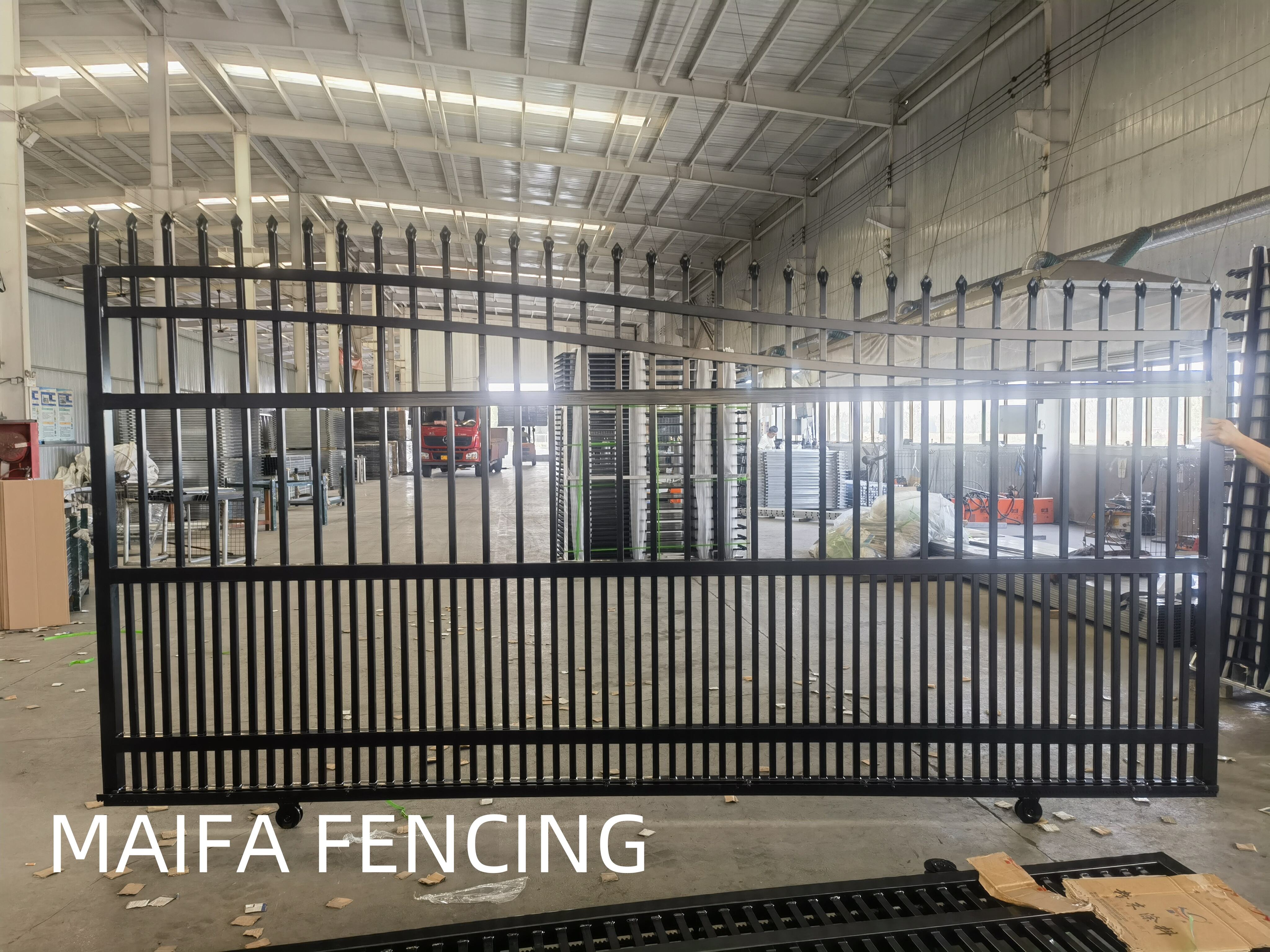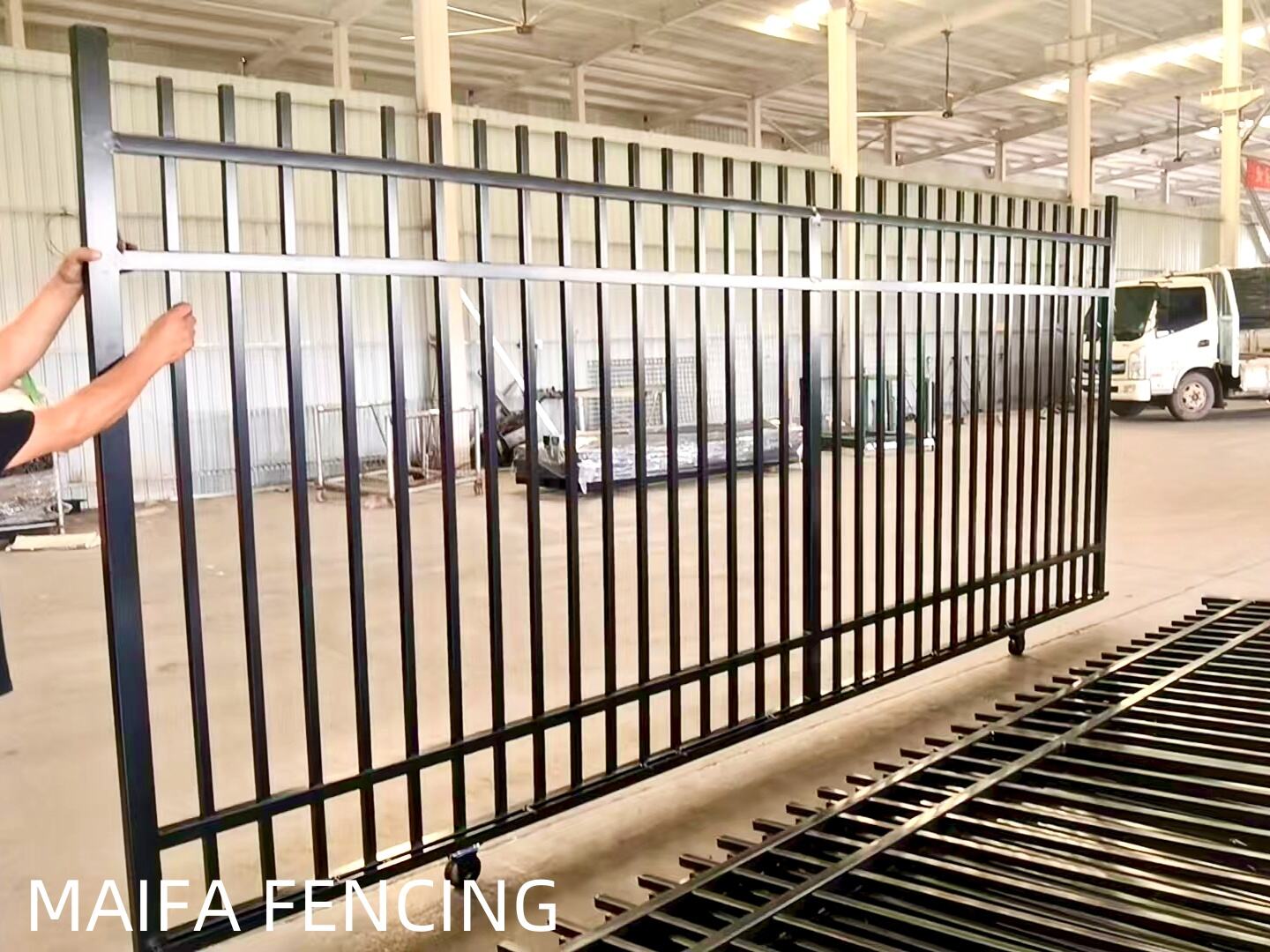Ensuring Safety and Security at Public Events
How Temporary Fences Prevent Unauthorized Access and Enhance Site Security
Putting up temporary fences creates a real barrier that stops people from getting in without permission, but still lets security folks see what's going on around them. According to research done last year by Ponemon Institute, places that used these kinds of fences saw about 34 percent fewer problems at their borders than those without any fencing at all. These modular fence sections actually help control where people can enter, guiding crowds toward specific check points where staff can quickly check IDs and such. And there's another benefit too: most event planners say they noticed way less unwanted visitors trying to sneak in once they had these temporary barriers installed. One survey even showed that nearly 8 out of 10 organizers experienced this drop in trespassers.
Reducing Risks of Overcrowding, Bottlenecks, and Stampedes With Controlled Zones
Dividing event spaces into separate zones through temporary fencing allows organizers to manage how many people gather in each area. According to research from Ponemon in 2023, events that implement this method report about 60 percent fewer problems with overcrowding. Places where crowds tend to concentrate, such as around main stages or popular food stands, get fenced off so they don't spill over into walking paths. The system works best when there's both outer boundaries and inner barriers that can be adjusted depending on how full different sections become during the event. When these physical barriers work together with camera monitoring setups, staff members receive automatic warnings whenever any section hits 80% capacity. This gives them time to move people around before things get too packed, which helps maintain safety and keeps everyone enjoying themselves without feeling cramped.
Case Study: Securing a Music Festival Using Temporary Fencing and Surveillance Integration
The 2023 SoundWave Festival in Austin, Texas, deployed 2.3 miles of temporary fencing with integrated surveillance cameras to manage 45,000 daily attendees. Key results included:
| Metric | Result |
|---|---|
| Unauthorized entries | 0 |
| Evacuation time | Reduced by 28% |
| Medical incidents | 41% below industry average |
RFID-equipped gates aligned fencing checkpoints with ticketing data, while elevated surveillance towers provided line-of-sight across all zones. Security teams redirected 12 potential bottlenecks before they formed using real-time crowd analytics displayed on geofenced site maps.
Improving Crowd Flow and Attendee Movement
Directing Foot Traffic Efficiently Through Food, Vendor, and High-Traffic Areas
Putting up temporary fences makes all the difference when it comes to managing crowds in busy spots such as food courts or shopping areas. When people walking are kept separate from those standing in line, event organizers see about a 27 percent drop in accidents according to some studies from Ponemon back in 2023. We've seen this work wonders at festivals too. The way these fences curve around food stands actually helps direct folks straight to where they need to go without getting stuck near cash registers or payment machines. It's amazing how something so simple can transform crowd control.
Designing Intuitive Pathways to Prevent Bottlenecks and Ensure Smooth Movement
Research shows crowds follow the path of least resistance when directional cues align with spatial logic. At the 2023 Super Bowl, color-coded temporary fence corridors reduced average attendee wait times by 40% compared to traditional rope barriers. Key principles include:
- Maintaining 8–10 foot widths for two-way foot traffic
- Angling fence junctions at 45° to avoid "blind corner" congestion
- Using contrasting visual markers every 20 feet for orientation
Principle: Using Modular Temporary Fence Layouts to Guide Natural Attendee Flow
Modular systems let event planners tweak crowd movement as things happen on the ground, which matters a lot since almost two thirds of people at events don't stick to their planned paths according to Event Safety Alliance numbers from last year. Take this big tech conference with around 12 thousand attendees for example. The organizers kept moving those temporary fences every hour throughout the day, all because they had these thermal cameras picking up where crowds were getting too dense. And it worked pretty well too. They managed to cut down on overcrowding in hotspots by about a third without messing up the emergency exits that need to stay clear no matter what.
Defining Access Zones and Managing Entry Points
Creating VIP, Restricted, or Reserved Sections Using Temporary Fencing
Temporary fencing helps split up event spaces in just the right way, so organizers can set up VIP areas, zones for staff only, or those special technical spots that need protection. When security folks isolate these important parts of an event, they cut down on people getting where they shouldn't be. Pretty much every event manager worries about this stuff too – according to the Event Safety Report from last year, around three out of four managers list unauthorized access as their biggest headache. The modular fence panels work great because they fit almost any venue shape, making clear boundaries that still let crowds see what's going on while keeping things exclusive where needed.
Controlling Guest Arrival and Departure Through Designated Entrances and Exits
Strategically placed entry and exit points streamline attendee movement while reducing congestion. Temporary fences with integrated gates enable staff to monitor guest flow, verify credentials, and prevent bottlenecks. A study of 12 large-scale events found that venues using dedicated entry zones reduced peak-hour wait times by 42% compared to open-access setups.
Case Study: Color-Coded Temporary Fence Zones at a Corporate Expo for Clear Access Control
A multinational tech firm implemented a tiered access system at its 2023 product launch using temporary fencing color-coded by clearance level:
- Blue zones (general attendees): Basic perimeter fencing with QR code scanners
- Gold zones (executive/VIP): Double-layered barriers with biometric checkpoints
- Red zones (media/staff): RFID-gated sections with 24/7 surveillance
This system reduced unauthorized access incidents by 91% while improving attendee navigation scores by 34% post-implementation.
Enhancing Event Logistics and Space Utilization
Temporary fences transform event spaces into organized, functional environments by creating clear operational boundaries. A 2022 crowd management study found segmented layouts reduced venue setup time by 42% compared to open-floor plans.
Using temporary fences to define functional areas and improve operational efficiency
Event planners use temporary barriers to partition vendor markets, medical stations, and sanitation zones. This spatial organization cuts cross-traffic interference by 35% while keeping staff workflows unobstructed, according to event logistics analysts.
Balancing space allocation: Avoiding under-use or over-provisioning of fenced zones
Overly large VIP sections waste 28% of premium space on average (EventTech 2023), while undersized entry queues cause delays. Modular fencing systems allow real-time adjustments, maintaining 85–90% zone utilization during peak hours.
Strategic placement of temporary fences to support staging, equipment, and staff areas
Positioning temporary barriers behind stages creates secure equipment corridors, reducing load-in disruptions by 40%. Perimeter fencing around staff-only zones prevents accidental guest entry while maintaining quick crew access points.
Flexibility and Rapid Deployment of Temporary Fence Systems
Adapting Temporary Fences to Dynamic Crowd Conditions and Last-Minute Layout Changes
Temporary fence systems these days really shine when things need changing on the fly. At events, organizers often have to move barriers around while the action is still happening because crowds get bigger than expected, bad weather hits, or there's some kind of security issue. Nobody wants operations grinding to a halt just because of something unplanned. Take music festivals as a good case in point. People tend to gather around stages all of a sudden, creating bottlenecks. The good news? With those light weight panels available now, staff can actually extend fencing along walkways pretty quickly. We saw this happen last summer at a local concert where they had to adjust the layout three times during one evening alone.
Trend: Modular and Reconfigurable Temporary Fence Designs for Event Agility
Leading manufacturers now prioritize modularity, with 74% of 2023 industry reports highlighting demand for interchangeable panels, privacy screens, and anti-climb add-ons. These systems enable custom configurations:
- Height adjustments (4ft to 8ft) for VIP areas or general admission zones
-
Rapid panel swaps to create emergency exits or vendor access points
Such designs reduce equipment costs by 30% compared to traditional single-use barriers while supporting sustainability through repeated reconfiguration.
Speed of Installation and Dismantling for Short-Duration Events
Temporary fencing makes all the difference at pop-up markets and weekend festivals, deploying around 65 percent faster than those permanent options nobody wants to deal with long term. Setup crews typically manage to get a 1000 foot perimeter secured in just under three hours when they work with those interlocking bases and ready made sections. And it gets even better when it comes time to take everything down. These collapsible frames mean the whole site can be cleared out in about ninety minutes after the event wraps up. That kind of speed matters a lot for places that host multiple events one after another without any downtime between them.
FAQs
What are the primary benefits of using temporary fencing at public events?
Temporary fencing provides security by preventing unauthorized access, controlling crowd flow, and creating defined zones for different sections such as VIP or staff areas. They are also flexible and can be rapidly deployed and adjusted to meet the dynamic needs of an event.
How does temporary fencing help with crowd management at events?
Temporary fencing helps organize event spaces into manageable zones, preventing overcrowding and bottlenecks. This allows organizers to control foot traffic and improve attendee movement, reducing the risk of accidents and enhancing overall safety.
Can temporary fences be customized for specific event requirements?
Yes, modern temporary fence systems are modular and reconfigurable. They can be adjusted in height and shape, and equipped with additional features like privacy screens or anti-climb panels to suit specific event needs.
Are temporary fences cost-effective compared to permanent solutions?
Yes, temporary fences are often more cost-effective as they can be reused and reconfigured for different events. Installation and dismantling are quicker and involve lower labor costs, making them ideal for short-duration or recurring events.



